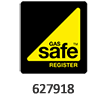
Hobart Equipment Service and Repair specialist
We Service and Repair the Whole Range of Hobart Equipment, Natural Gas, LPG & Electric.

"Our Priority is to keep your equipment in service. We attend site quickly, diagnose the fault and if possible repair the fault from van stock, and leave your equipment working."
Key reasons to use Catercare:
- We have fast response times
- Our engineers are highly skilled, qualified and experienced
- We offer competitive pricing
- We provide bespoke services designed specifically for you
- We are Gas Safe Registered
- We are F-Gas Certified
- We are CCEECC Trained
- All our engineers are DBS enhanced checked
- We carry out due diligence for health & safety and environmental health
- We provide risk assessments & method statements
- We are CHAS Premium Plus accredited (Contractor Health and Safety Assessed)
Helpful tips to save you money
- Daily cleaning of your equipment inside & out
- Follow the manufactures guidelines for use
- Use de-carbonizing / soak tanks for the tough dirt & grease
- Carry out regular maintenance
- Professionally deep clean your kitchen
- Professionally deep clean you grease extraction system
- Clean up spills & boil overs immediately
- Re calibrate control buttons regularly & Check thermostats regularly to ensure efficiency.
Trouble Shooting
Do not turn up the flame too high. A good rule of thumb is if the flame can be seen anywhere up the side of the pot, it is too high. Match the pan size to the burner. Using a 6" pan on an 8" burner will waste over 40% of the heat produced by the burner. Invest in sturdy flat bottomed cookware.
The energy consumption of a burner is strongly influenced by the user’s way of cooking. For example some chefs use 50% more energy than others cooking the same meal just because of their style of cooking.
Switch off equipment when it is not needed. By providing good staff training they should know how long a piece of equipment takes to reach a required temperature.
Most of the faults that affect gas ranges involve the supply and ignition of gas in the burners.
Trouble Shooting Gas & LPG
Most of the faults that affect gas ranges involve the supply and ignition of gas in the burners. Regular maintenance will avoid larger, more expensive repairs and keep them in service
If the oven won't heat to the desired temperature or heats unevenly, the problem could be a faulty door gasket. The best way to test for this is to pass your hand around the door, while the oven is turned on. If you can feel heat escaping, the gasket needs replacement
Clogged burners are a common problem with gas ranges because foods spilled on the burners block the gas ports and prevent ignition. Clear the holes with fine wire.
An oven that does not heat or heats unevenly is most likely to be a faulty control, thermostat, or timer
If the oven doesn't heat evenly or doesn't heat at all, the oven thermostat may be faulty
The flame of gas range burners should be steady and slightly rounded, with a light-blue tip. The flame should be quiet and should respond to adjustments made at the control knobs.
Most burner troubles can be quickly solved by adjusting the air shutter mixer plate. If the flame is yellow, it's not receiving enough air. If the flame is high or makes a roaring noise, it's getting too much air.
Trouble Shooting Electric
One of the most common faults that affect electric ranges and ovens involve faulty heating elements. If your oven will not get up to temperature or is heating unevenly it is could be a faulty door gasket. A simple way to identify the problem would be to pass your hand around the edge of the door when the oven is turned on. If you can feel heat escaping the door gasket requires replacing.
When your oven will not heat or heats unevenly, the fault could be with the thermostat or controller.
Another common fault is fuses. If the cooker is receiving power but will not switch on it is most likely to be a fuse fault. Check to see if the fuse has blown or circuit breaker tripped out and test the electrical cord.
To test the oven temperature, place a thermostat in the oven and set the temperature 300°C. After 20 minutes if the result is off by less than °F the control is normal.
Our Maintenance Schedule
Dish and glass washers
- Dismantle and checked the inlet valve/filter mesh and the working condition of the heating element.
- Carry out visual check on internal wiring & control panel switches.
- Test and clean if necessary, all wash and rinse jets.
- Inspect the condition of internal filters and water softener.
- Test the operation of door safety switch.
- Calibrate wash and rinse temperature.
- Test all chemical dosing pumps.
- Inspect wash arm bearings.
- Carry out earth and insulation resistance test.
Gas equipment
- Dismantle and grease the taps.
- Clean the burners and venturis.
- Check and adjust gas pressure as necessary and adjust gas burner pressures.
- Inspect the condition of the thermocouples & calibrated thermostats.
- Inspect all controls are in working order.
- Inspect the condition of the door seals.
- Carry out a soundness test.
Electric ovens
- Checked the operation of the control panel switches.
- Carry out a visual check of internal wiring and connectors.
- Carry out an earth continuity and insulation resistance tests.
- calibrate thermostats.
- Inspect the condition of the door seals.
- Carry out a soundness test.
Hot cupboards and gantries
- Test the operation of heater controls.
- Test heat lamps.
- Carry out a visual check of internal wiring.
- Inspect the general condition of doors & castors.
- Carry out an earth continuity and insulation resistance test.
Small electrical appliances
- Test the operation of safety devices.
- Inspect bearings and blades where necessary.
- Test the operation of the control panel switches.
- Carry out a visual inspection of internal wiring and connectors.
- Carry out an earth continuity and insulation resistance tests.
Microwave ovens
- Carried out a radiation leakage tests & power test.
- Inspect the condition of the roof liner & base plate.
- Remove, clean and inspect the condition of the air filter.
Water boilers
- Test the operation of the thermostats.
- Remove loose lime scale.
- Test the operation of the control panel switches.
- Carry out a visual inspection of internal wiring and connectors.
- Carry out an earth continuity and insulation resistance tests.
- Inspect water treatment facilities.
Illinois Tool Works was founded in 1912 and is a highly diversified corporate group producing engineered fasteners and components, equipment and consumable systems, and specialty products. The group's product range includes systems and consumer goods for consumer and industrial packaging, electrical equipment and welding machines.
The company has been focusing on giving its products an added value and creates innovative solutions for customers for more than a century. Today, Illinois Tool Works or ITW is a Fortune 200 company and employs more than 50,000 people in 56 countries. Headquartered in Glenview, Illinois. Group turnover amounted to USD 14,8 billion in 2018.



